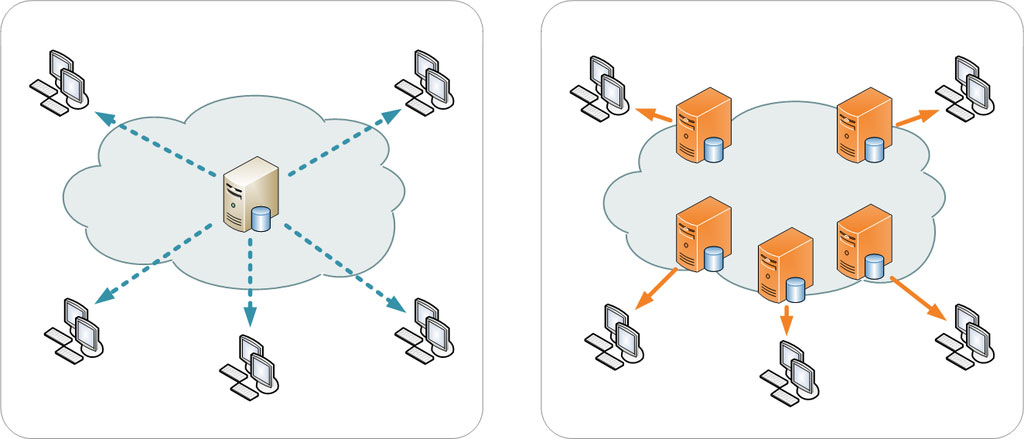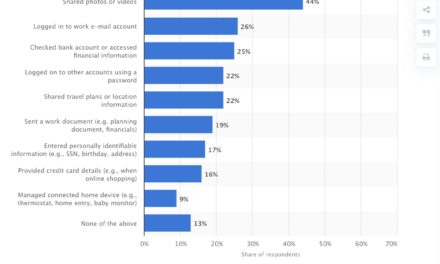Are you ready to learn more about the new Internet protocol HTTP/3 and WordPress? Good, because that is exactly what we will talk about in this article.
The new standard HTTP protocol will bring some changes and innovations to how data is transmitted online. Therefore, its widespread adaption will have consequences for everything connected to the Internet, including websites built with WordPress.
To prepare you for the coming of HTTP/3, we will talk about what exactly it is, how it come to be, what is new and different about it, and HTTP/3’s benefits and downsides. After that, we examine how you can use the new protocol with your WordPress site.
What is HTTP/3 and What Is New About It?

In a nutshell, HTTP/3 is an upcoming new HTTP protocol aimed at making online connections faster and more secure. But let’s start from the beginning.
What is an Internet Protocol?
At this point, we might have to take a step back and first explain what an Internet protocol is. As an online user, you are definitely familiar with it. It is the http:// or https:// part in front of website addresses. They are at the very foundation of what makes the Internet work. The World Wide Web wouldn’t exist without them.
However, neither HTTP nor HTTPS are actual just one protocol. They are just sort of the top layer. Below that you a whole number of other layers.
One of them is TLS or Transport Layer Security. It is what encrypts online connections and keeps them secure. We often mistakenly refer to is as SSL. Another important protocol is TCP, which stands for Transmission Control Protocol. Its responsibility is ensuring the reliability of connections and limiting user bandwidth in order to not overload them.
Why does this matter?
Because all of these different protocols can have an impact on how quickly a website loads. For example, switching your WordPress site to HTTPS (which is really HTTP/2) is a great way to make your site faster. Seriously, you can try it out here.

Incidentally, the speed bump in HTTP/2 was mainly due to improvements in TCP. As you can see, working on just one part of the protocol set can have a big impact on loading speed. The new version of HTTP aims to do even better.
The Development of HTTP/3: A Short Overview
HTTP/3 was first proposed as a concept in November 2016 by the Internet Engineering Task Force (IETF). This is an international Internet standards body in charge of defining and promoting Internet protocol standards. Its members include people from big companies such as Google, Cloudflare, Meta, and others.
Many of these were also early adopters of HTTP/3. For example, Google, Facebook, and Apple have all been using the new protocol or connections based on the same principals for a while.

HTTP/3 official release was in June 2022. That means, it is now an official protocol that you can use in the wild. And people are doing so. Already a quarter of websites are running on the new version.

Incidentally, since it came out, the use of HTTP/2 has decreased.

In addition, by now we also have browser support for HTTP/3 in all modern browsers.

So, if you want to use HTTP/3 and WordPress together, theoretically there is no obstacle. However, why should you care? What is the big deal?
HTTP/3 Changes and Benefits
The biggest change from HTTP/2 to HTTP/3 is that it will switch from TCP to an improved version of the UDP (User Datagram Protocol) called QUIC. The actual adaption of the HTTP protocol to version 3 is relatively minor, all the changes are just to make sure it works with QUIC. So, really, this update is more about TCP/2 than HTTP/3.
The new protocol promises to be better and more efficient in several ways:
- Use of UDP is as common as TCP but it offers some benefits in comparison. Among them is that UDP is not dependent on operating system upgrades for improvements. Therefore, it is easier to ship new versions without relying on computer makers to implement them.
- QUIC needs fewer handshakes between the server and client for authentication. This eliminates data round trips that can cause delay. It can also start sending information more quickly, even before the connection has been established. Plus, QUIC is more flexible bandwidth control.
- HTTP/3 directly integrates with TLS, so there can be no insecure connections through it. It also has a higher encryption level, making online connections even more secure. Plus, QUIC makes establishing secure connection faster, which is important in an online world where encryption is now standard.
- The new protocol allows sending and receiving several files at the same time in different data streams. This is already possible in HTTP/2 but version 3 does it more efficiently. It is better at resending data that failed to arrive without blocking the rest of the download.
- It comes with the ability to migrate connections between IP address without breaking down. This helps when moving networks, e.g. because you lose your wifi connection and move to cellular data. This is not possible on the old protocol.
- HTTP/3 is made to be evolved. Its architecture makes it easier to update in the future. Plans for new versions and better features are already in the works.
While all of this sounds great, it has to be mentioned that the potential performance improvements of HTTP/3 are limited. It will most likely mainly benefit users on the slowest connections. That means people in places with poor connectivity or on mobile devices on the move between networks, e.g. when crossing a rural area with a train. The effects are less pronounced for places that already have a good connection.
Downsides of the New HTTP Protocol
While it’s easy to focus on the benefits and the shiny new features, it’s also important to keep in mind that nothing comes without a cost. QUIC and HTTP/3 have a few downsides as well:
- They are more of a blackbox for ISPs, firewall providers, etc. Those companies might not want to allow the new protocol because it makes their work harder and allows for less diagnosis.
- Tighter encryption leads to more overhead, which can lead to worse performance on high-demand connections.
- Some people criticize that the protocol is being championed by large corporations and raise concerns that normal/other users will be left behind in its implementation.
How Can You Use HTTP/3 With Your WordPress Site?
So, if you are convinced of the benefits of using HTTP/3, how can you enable it for your WordPress website?
Important Prerequisites
The good news is that, if your website is already running on HTTP/2 (i.e. if you are using HTTPS), you probably won’t have to change anything. As explained above, the differences between HTTP/2 and HTTP/3 are not so great, it is more about the underlying QUIC protocol. Therefore, if your site is already using and working with the older HTTP version, the new protocol shouldn’t pose a problem.
If you haven’t moved your WordPress site over to HTTPS yet, use our tutorial on that topic. You can, of course, also implement some good basic speed optimization while you are at it:
- Eliminate render-blocking resources
- Remove unused CSS and JavaScript
- Switch on lazy loading
- Implement Google Core Web Vitals (we also have an in-depth series on each metric)
- Speed test your website
Talk to your Hosting Provider
You can not implement HTTP/3 or QUIC in WordPress yourself. It has to happen on the server level, which likely means it’s your hosting provider’s job. Therefore, unless you own or control your own server, the first step is to check if your hosting provider offers it or not. If not, you can still set up HTTP/3 with a CDN, as you will see below.

If your hosting provider does offer HTTP/3, the next step is to check what needs to be done so you can use it. Is it enabled by default or do you need to request to switch it on?
If you have covered all of the above, the final step is up to your website visitors. In order to take advantage of an HTTP/3 connection to your WordPress site, they need to use a browser that supports the new protocol. More on that below as well.
Alternatively, Use a CDN
As mentioned, if your hosting provider does not offer HTTP/3, another option is to use a content delivery network (CDN). If you are not familiar with what that is, it’s a network of computers all over the world that, if you sign up for it, contain copies of your website files. That way, website visitors can receive them from the server nearest to them, reducing the distance data has to travel and loading time.

Naturally, if a CDN offers HTTP/3 and has implemented it on their servers, you can still let your visitors benefit from connections via the new protocol. Good options here are Cloudflare and Fastly. Both companies have been involved in the development of QUIC and support the protocol.
Check if Your WordPress Site Connects via HTTP/3
Once you have done your best to set up HTTP/3, the final step is to see if it is working. There are several ways to do so.
The first is use an HTTP/3-capable web browser. As shown above, all modern major browsers now belong to this group, so as long as you have their latest version, the protocol should be available by default. If you are using an older edition, HTTP/3 might still be an experimental feature that you have to switch on.

Once you have made sure your browser is up to the task, it’s time to navigate to your website. Here, open the browser developer tools, go to the Network tab and check the Protocol column.

It will tell you which connections are coming over which version of HTTP. Check if your main website data is transmitted via HTTP/3.
Alternatively, there are also online testing tools you can use like Domsignal.

Here, simply type in your domain name, hit enter, and find out your results in seconds.

HTTP/3 and WordPress – At Your Service
HTTP/3 is poised to be the new standard of Internet connection protocols. It comes with a number of new features and implementations that aim to make online connections faster, more reliable, stable, and more secure.
It has been in development for a number of years. After its rollout in 2022, adoption has been quite quick around the Internet though there is still a lot of room for more. In addition, the current version of HTTP/3 is only its first iteration. New versions with additional improvements are already in development.
Hopefully, by now you feel like you have enough information to figure out if this is important for your WordPress website. The good news is, there isn’t much for you to do to implement HTTP/3 on your site. It’s mostly up to your hosting provider, so start there. However, don’t forget to check if your site is actually on the new protocol.
Do you already use HTTP/3 with your WordPress website? Have you noticed any noticeable differences? Let us know in the comments!











